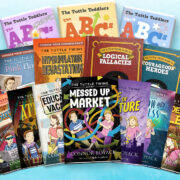Virtual Reality (VR) and Augmented Reality (AR) technology are quickly changing several industries, including education. we will look at how VR/AR headsets and smart glasses will change the learning experience in 2023. We’ll look at how VR/AR technologies are impacting traditional teaching techniques, from realistic virtual field trips to interactive augmented reality simulations. Prepare to understand how these innovative tools are opening up fresh possibilities for exciting, realistic and effective learning.
Immersive Virtual Field Trips
VR/AR headsets allow students to go on interactive virtual field trips that cross physical limits. Students can visit historical places, dive to the depths of the ocean, and even go to outer space using realistic 3D environments and interactive elements. This immersive experience allows for more interaction, understanding, and a sense of presence that standard textbooks cannot match.
Interactive Learning Simulations
Virtual reality and augmented reality technologies allow interactive learning simulations that provide hands-on experiences in a safe and regulated setting.Students can participate in virtual experiments, medical operations, or designing buildings to apply what they have learned in real-world situations. This method of practical learning increases creativity, problem-solving skills, and provides an improved understanding of difficult subjects.
Personalized and Adaptive Learning
Virtual reality/augmented reality headsets and smart glasses enable personalised and responsive learning experiences. These technologies enable students to learn at their own speed and style by personalising content according to their unique needs and interests. VR/AR platforms may improve the learning journey by changing the difficulty level and content presentation using real-time feedback and adjustable technologies. This personalised approach provides maximum participation and retention of knowledge.
Collaboration and Remote Learning
VR/AR technologies bridge the gap between real and virtual classrooms, allowing students and teachers to work together smoothly no matter where they are. Students can participate in realistic and interactive group projects, discussions, and lectures by using virtual meeting spaces and shared settings. Remote learning becomes more enjoyable and welcoming, motivating learners to connect and form groups.
Enhanced Visualizations and 3D Models
Virtual reality/augmented reality headsets and smart glasses give improved representations and 3D models that bring complicated concepts to life. Students are able to dissect virtual creatures, create molecular models, and look at complex structures of the body. This visual experience improves information understanding and think about making complicated subjects more real and understandable.
Accessible Learning for All
Virtual reality and augmented reality technology have a chance to make education more inclusive and affordable. The interactive and multimodal part of VR/AR experiences may help students with different learning styles or physical limitations. These technologies promote a more inclusive educational environment by providing change paths to education and supporting different needs.
Future Career Readiness
Educational institutions train students for the future workforce by introducing VR/AR technologies into their lessons. VR/AR applications are already used in many industries, including healthcare, engineering, and design. Students who are comfortable with these technologies are more prepared for future employment customers, such as spatial thinking, problem-solving, and knowledge of technology.
Conclusion
Immersive, interactive, and personalised teaching tools provided by VR/AR headsets and smart glasses are revolutionising the learning experience. From virtual field trips to hands-on exercises, these technologies improve student learning, and teamwork. As we approach 2023, the introduction of VR/AR into schools offers to transform traditional educational techniques, opening up fresh areas of learning and preparing students for a future that welcomes innovation and technology. Accept the VR/AR revolution in education and watch how it is transforming the way we study and educate.




Comments